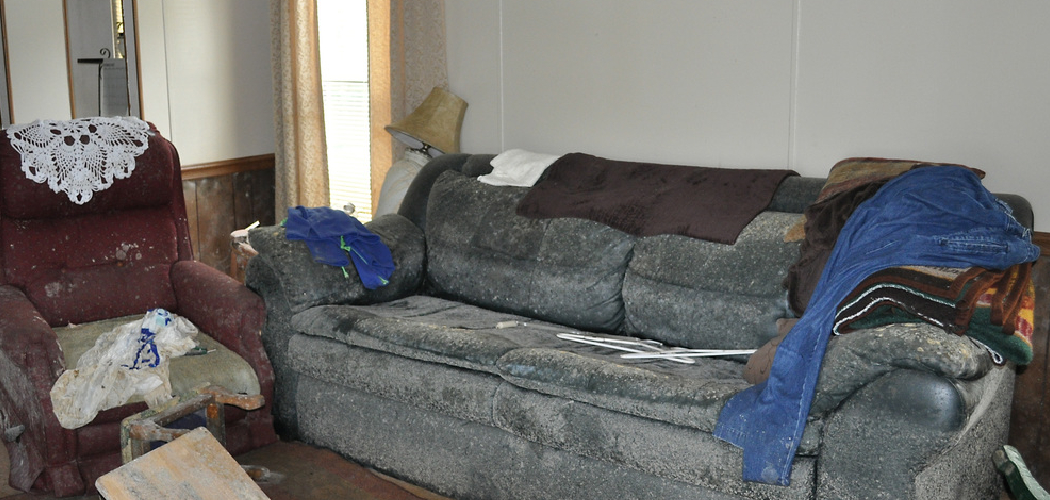Mildew on leather furniture is a common issue that can damage the appearance and integrity of your valuable pieces. This problem often arises in areas with high humidity or poor ventilation, where moisture can accumulate and promote mildew growth.
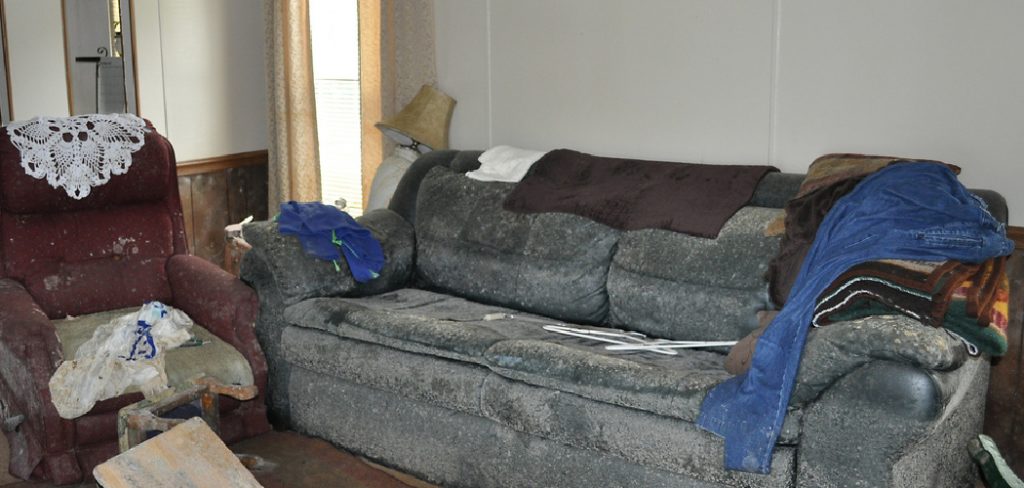
Addressing the presence of mildew promptly is crucial to prevent it from spreading and causing further deterioration of the leather. In this article, we will provide a step-by-step guide on how to clean mildew from leather furniture effectively. The cleaning process involves assessing the extent of the mildew damage, preparing the necessary cleaning materials and workspace, and then meticulously cleaning and conditioning the leather to restore its original beauty.
Following these instructions ensures your leather furniture remains in top condition and prevents future mildew growth. The keyword “how to clean mildew from leather furniture” will guide you through the essential steps to maintain your beloved leather pieces.
Assessing the Mildew Damage
The first step in tackling mildew on leather furniture is to thoroughly assess the extent of the mildew damage. Begin by examining the leather surface for visible signs of mildew growth, which typically appear as green, black, or white spots and patches. Pay close attention to crevices, stitching, and any areas that may trap moisture. Alongside the visual inspection, it is important to evaluate the severity of any accompanying odor and discoloration; mildew often has a distinct musty smell and can cause the leather to darken or change color.
Next, identify the underlying cause of the mildew growth. Moisture and humidity are the primary culprits, so investigate potential sources such as nearby windows, air conditioning units, or damp carpets that might contribute to the problem. Look for signs of water leaks, condensation, or any other factors that could increase humidity levels near the leather furniture.
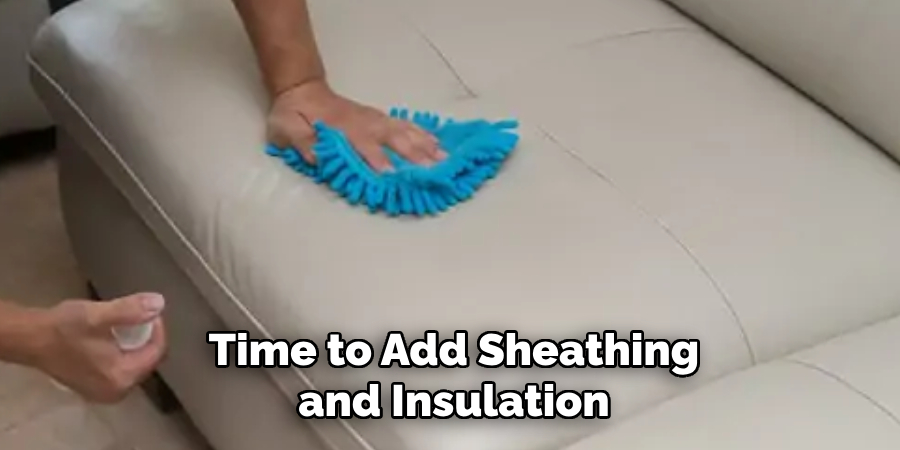
By pinpointing the sources of moisture, you can address these issues to prevent recurrence and further mildew growth. This thorough assessment will provide a clear understanding of the extent of the damage and guide the cleaning process effectively.
Preparing the Cleaning Area and Materials
Preparing the cleaning area and gathering the necessary materials is an important step in ensuring an effective cleaning process. Start by setting up a well-ventilated workspace. Adequate ventilation is crucial as it helps to dissipate any fumes from cleaning products and speeds up the drying process.
Open windows or use fans to circulate air and ensure that the cleaning area is well-lit so you can clearly see the mildew-affected areas. Protect surrounding surfaces by laying down drop cloths, towels, or old sheets to catch any spills or splashes from the cleaning solutions.
Next, gather all the necessary cleaning materials so everything is within reach as you work. You’ll need a mild soap or leather cleaner designed to treat leather surfaces. Avoid using harsh detergents or all-purpose cleaners, which can damage the leather. Have a selection of soft cloths or sponges on hand to apply and wipe the cleaning solutions.
Additionally, distilled white vinegar and rubbing alcohol are essential for treating stubborn stains; both of these common household items can effectively break down mildew and disinfect the leather.
Lastly, a good quality leather conditioner should be included to restore moisture and suppleness to the leather after cleaning. Conditioning leather is crucial as it helps maintain its appearance and prevents cracking or drying out over time. By thoroughly preparing your cleaning area and materials, you ensure a smooth and efficient mildew removal process, ultimately restoring and preserving the beauty of your leather furniture.
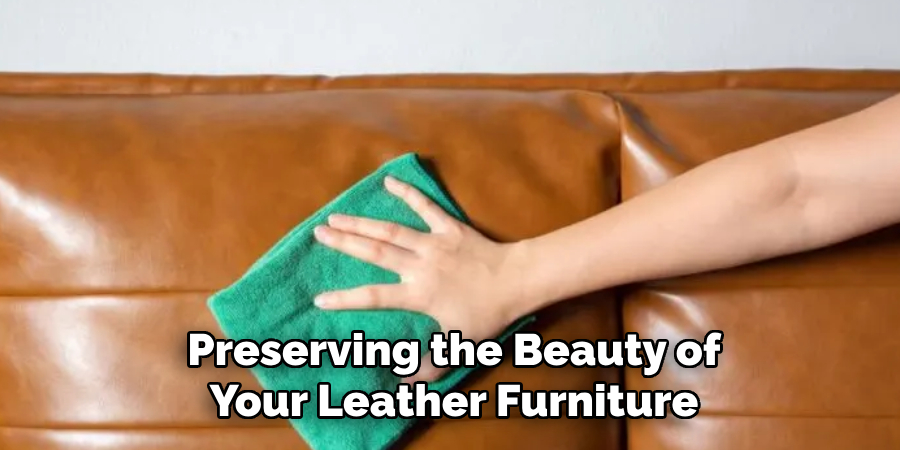
How to Clean Mildew from Leather Furniture: Cleaning the Mildew from Leather
1.Testing a Small Area
- Conducting a Spot Test in an Inconspicuous Area: Before applying any cleaning solution to the affected areas, it is important to test it on a small, hidden part of the leather furniture. This will help ensure that the solution does not damage or discolor the leather. Use a minimal amount of the chosen cleaner on a soft cloth and gently rub it onto the test spot. Observe the area for any adverse reactions over a period of 24 hours.
2.Removing Surface Mildew
- Dampening a Soft Cloth With Mild Soap and Water or a Leather Cleaner: Once the spot test confirms that the cleaning solution is safe, dampen a soft cloth with the mild soap and water mixture or a leather-specific cleaner. Avoid soaking the cloth to prevent excessive moisture from penetrating the leather.
- Gently Wiping the Affected Areas: Carefully wipe the mildew-affected areas using gentle, circular motions. This will help lift and remove surface mildew along with any accumulated dirt. Ensure that you cover all the visible spots of mildew to prevent further spread.
3.Treating Stubborn Stains
- Dampening a Cloth With Distilled White Vinegar or Rubbing Alcohol: For mildew spots that are particularly stubborn, dampen a cloth with distilled white vinegar or rubbing alcohol. Both of these solutions can effectively break down and dissolve mildew stains without harming the leather.
- Blotting the Mildew Spots to Lift and Dissolve the Stains: Blot the mildew-affected areas gently without rubbing aggressively. Reapply the vinegar or rubbing alcohol as necessary to completely dissolve the mildew stains.
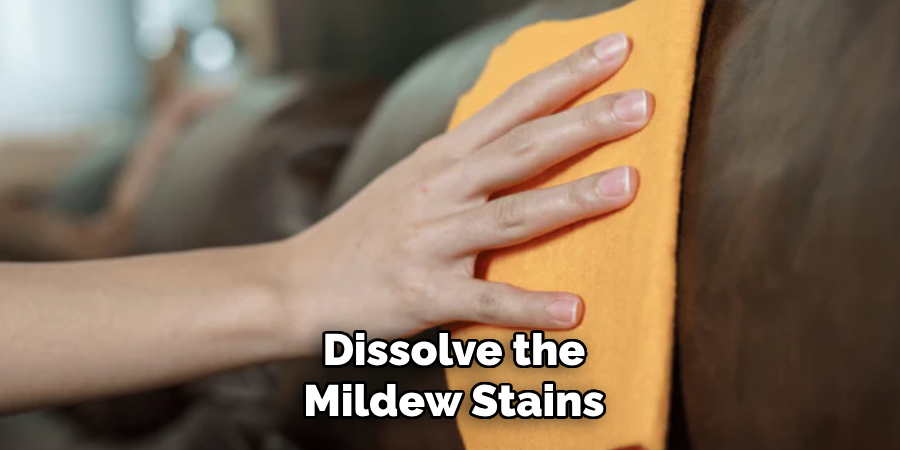
4.Allowing the Leather to Dry Completely
- Air Drying the Furniture in a Well-ventilated Area: After cleaning, allow the leather furniture to air dry completely. Place it in a well-ventilated area away from direct sunlight or heat sources, as these can cause the leather to crack or become brittle.
- Repeating the Cleaning Process as Needed: For persistent mildew or stains, repeat the cleaning process until the leather is fully restored to its original condition.
By following these steps, you can effectively remove mildew from leather furniture, ensuring its longevity and maintaining its aesthetic appeal.
Conditioning the Leather
Applying Leather Conditioner
- Using a Clean, Soft Cloth to Apply a Small Amount of Conditioner to the Leather Surface: Begin by selecting a high-quality leather conditioner suitable for your type of leather furniture. Apply a small amount of conditioner to the leather surface using a clean, soft cloth. Ensure that you do not over-apply, as excess conditioner may not be absorbed and can leave a residue on the leather.
- Massaging the Conditioner Into the Leather in Circular Motions: Gently massage the conditioner into the leather using circular motions, working it evenly across the entire surface. This helps ensure that the conditioner penetrates effectively, revitalizing the leather’s natural oils and maintaining its softness and flexibility.
Allowing the Conditioner to Penetrate
- Letting the Conditioner Sit for Several Minutes to Absorb Into the Leather: After applying it, allow it to sit and penetrate into the leather for several minutes. This waiting period is crucial as it enables the conditioner to thoroughly absorb, nourishing the leather from within.
Buffing the Leather
- Using a Clean, Dry Cloth to Buff the Leather Surface and Remove Any Excess Conditioner: Once the conditioner has had time to penetrate, take a clean, dry cloth and gently buff the leather surface. This will help remove any excess conditioner and leave a smooth, polished finish.
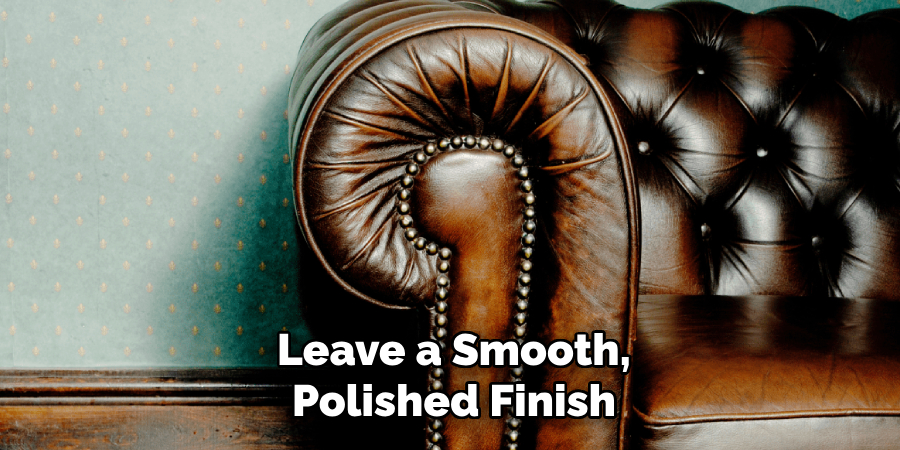
Repeating the Conditioning Process Periodically
- Reconditioning the Leather Periodically to Keep It Soft and Supple: To maintain its natural beauty and durability, repeat the conditioning process periodically. Regular conditioning keeps the leather soft and supple and resistant to cracking or drying out, ensuring long-lasting comfort and appeal.
Preventing Future Mildew Growth
Controlling Humidity Levels
- Using a Dehumidifier or Air Conditioner to Maintain Optimal Indoor Humidity Levels: To inhibit mildew growth, it is crucial to control the humidity levels in your home. Utilizing a dehumidifier or air conditioner can help maintain indoor humidity between 30% and 50%, reducing the risk of mildew formation on leather furniture.
- Avoiding Placing Leather Furniture in Damp or Humid Areas: Position leather furniture in well-ventilated spaces, steering clear of basements, bathrooms, or any areas prone to moisture.
Regular Maintenance
- Dusting and Vacuuming Leather Furniture Regularly to Prevent Dust and Dirt Buildup: Regularly dusting and vacuuming your leather furniture can help prevent the accumulation of dust and dirt, which can be a breeding ground for mildew.
- Treating Any Spills or Stains Promptly to Prevent Mold and Mildew Growth: Address spills or stains immediately by cleaning and drying the affected area thoroughly. Swift action helps prevent mold and mildew from establishing and proliferating on your leather surfaces.
Frequently Asked Questions
1. Can I Use Any Type of Soap to Clean Mildew Off My Leather Furniture?
No, using a mild soap or a leather-specific cleaner is important to clean mildew off your leather furniture. Harsh soaps or detergents can strip the leather of its natural oils and cause drying or damage. Always perform a spot test on a hidden area of the leather first to ensure the cleaner is safe.
2. How Often Should I Condition My Leather Furniture?
The frequency of conditioning your leather furniture depends on the usage and environmental factors. As a general guideline, conditioning every 6 to 12 months is recommended. However, if the leather is in a dry climate or used frequently, it might need conditioning more often. Regular conditioning helps maintain the leather’s softness and prevents cracking.
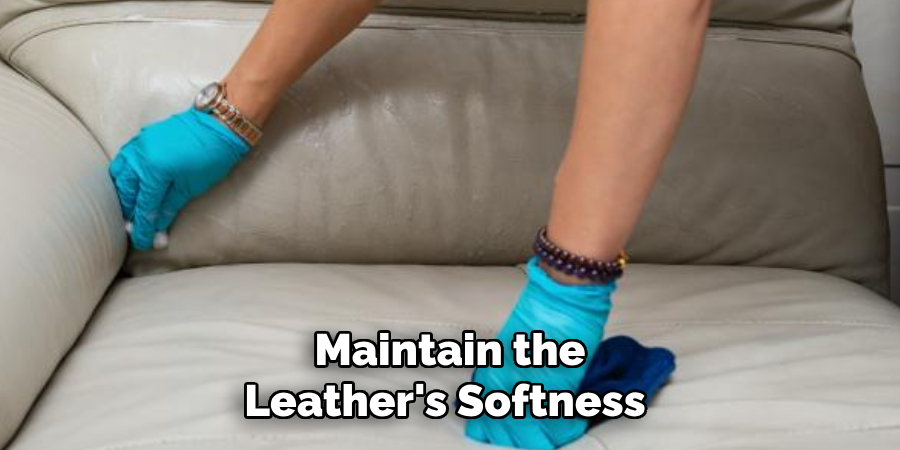
3. What Should I Do if Mildew Returns After Cleaning?
If mildew returns after cleaning, ensure that you are controlling the humidity levels in your home, as high humidity can facilitate mildew growth. Use a dehumidifier or air conditioner to maintain indoor humidity between 30% and 50%. Additionally, regularly inspect and clean your leather furniture to promptly address any new mildew growth. If the problem persists, consider consulting a professional leather cleaner for further assistance.
Conclusion
By following these comprehensive steps, you can effectively learn how to clean mildew from leather furniture. Begin by assessing the damage to understand the extent of mildew growth, followed by preparing the necessary materials to tackle the cleaning process.
Next, clean the mildew thoroughly to restore the leather’s pristine condition. It’s crucial to condition the leather afterward to replenish its natural oils and maintain its softness and flexibility. Lastly, prevent future mildew growth by controlling humidity levels and practicing regular maintenance.
Regular maintenance and prompt mildew treatment are essential to keep your leather furniture looking its best. Acting quickly to address mildew issues prevents further damage and helps preserve the beauty and longevity of your leather pieces. By adhering to these steps, you ensure that your leather furniture remains in top condition, offering long-lasting comfort and aesthetic appeal.
